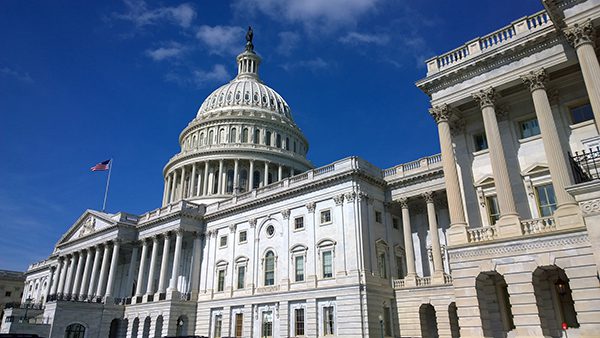After months of debate, both the House of Representatives and the Senate passed the farm bill rather quickly this week, and fresh produce was one of the winners.
President Trump plans to sign the bill, called the Agriculture Improvement Act of 2018, after the House passed it 369-47 Dec. 12, and the Senate passed it 87-13 Dec. 11.
“This is a strong bill in many areas,” said Robert Guenther, senior vice president of public policy for the United Fresh Produce Association, Dec. 12.
He said the produce industry saw improvements in funding for nutrition, research, pest and disease block grants, policy changes in the organic program, and more.
He said the industry should see benefits quickly with state block grants and Market Access Funding.
Retailers should also see many things to like.
Chris Jones, the National Grocers Association’s vice president of government relations and counsel, said Dec. 12, “We’re very happy with this result.”
The farm bill added no restrictions to Supplemental Nutrition Assistance Program (SNAP) benefits, but it added some incentives for healthier eating, such as the Food Insecurity Nutrition Incentive (FINI), which launched its “double up food bucks,” a few years ago, a program that matches produce purchases, effectively cutting prices in half for consumers using the program.
“We’ve had a number of members participate (in FINI) and it works well,” Jones said.
This farm bill increases FINI to $50 million a year in funding, which would match retailers who participate, and it allows a broader range of food sellers and product, rather than focusing on farmers markets and local food.
Why did the farm bill pass now, so quickly, after many months of debate?
Guenther said the biggest reason is that Republicans in the House lost their leverage on some sticking points by the November election, which turned its control over to the Democrats. It was better to pass something now than wait until the next Congress, he said.
United Fresh released a statement this week showing its priorities in this farm bill:
• Specialty Crop Block Grants Funding Continues – The bill continues funding for state block grants of $425 million over the next five years and includes language to enable multi-state proposals to receive funding through the program.
• Specialty Crop Research Initiative Enhanced – The bill provides $80 million a year for specialty crop research while also creating a new, separate dedicated $25 million annual fund for the citrus industry to continue their efforts to combat citrus greening. This is a $125 million increase in new resources directed at specialty crop research.
• Access to Healthy Fruits and Vegetables – Dramatically increases and makes permanent SNAP incentive program (FINI) at $250 million over 5 years by targeting incentives to retailers open year-round and with convenient access for SNAP consumers, and establishes a Produce Prescription Program for healthcare providers to prescribe fresh fruits and vegetables to low-income patients. Maintains the highly successful Fresh Fruit and Vegetable Program as fresh only for our nation’s students.
• New Urban and Indoor Agriculture Programs – The bill provides for the creation of a new position at USDA to assist urban and indoor farmers who are looking to create or expand their businesses. It also provides a new research and development priority of risk management tools for greenhouse products.
• New Focus on Mechanization Research – For the first time, research focused on mechanization will be a high priority under three important research programs at USDA including Specialty Crop Research Initiative, Agriculture and Food Research Initiative (AFRI), and Agriculture Advanced Research and Development Authority (AARDA). In addition, the bill requires the Secretary to review and assess how USDA programs can be used to support development of mechanization tools for specialty crops.
• Pest and Disease Program Strengthened – The bill provides funding at $75 million annually for USDA to continue to combat pest and disease challenges and approves a new USDA survey on pesticide for use in risk assessments.
• Enhancing USDA Trade Programs – The bill provides at least $200 million in funding for the Market Access Program (MAP) and also ensures continued funding for the Technical Assistance for Specialty Crops (TASC) at $9 million to provide additional assistance to commodity exporters. In addition, it requires USDA to eliminates bureaucratic hurdles that allows for further investment in breaking down trade barriers



